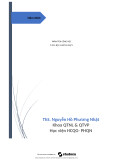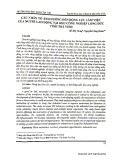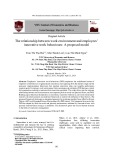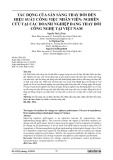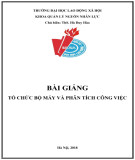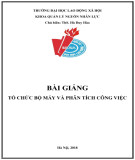
http://www.iaeme.com/IJM/index.asp 316 editor@iaeme.com
International Journal of Management (IJM)
Volume 11, Issue 4, April 2020, pp. 316-325, Article ID: IJM_11_04_032
Available online at http://www.iaeme.com/ijm/issues.asp?JType=IJM&VType=11&IType=4
Journal Impact Factor (2020): 10.1471 (Calculated by GISI) www.jifactor.com
ISSN Print: 0976-6502 and ISSN Online: 0976-6510
© IAEME Publication Scopus Indexed
INTELLIGENCE, CREATIVITY,
PSYCHOLOGICAL AND PERSONAL
QUALITIES OF EMPLOYEES AS FACTORS OF
REAL ACHIEVEMENTS
Anatoliy Furman
Department of Psychology and Social Work,
Ternopil National Economic University, Ternopil, Ukraine
Svitlana Kutsepal
Department of Theoretical and Legal Disciplines,
Yaroslav Mudryi National Law University, Poltava, Ukraine
Tamara Prykhodko
Department of Philosophy and Social Sciences,
Kharkiv State Zooveterinary Academy, Kharkiv, Ukraine
Svіtlana Krylova
Department of Cultural Studies and Philosophical Anthropology,
M.P. Dragomanov National Pedagogical University, Kyiv, Ukraine
Maryna Gliznutsa
Department of innovative entrepreneurship and international economic relations, National
Technical University “Kharkiv Polytechnic Institute”, Kharkiv, Ukraine
Zorina Vykhovanets
Department of Foreign Languages,
National Pirogov Memorial Medical University, Vinnytsya, Ukraine
ABSTRACT
In the work, we analyzed the relationship of indicators of psychometric intelligence
and psychometric creativity with intellectual, creative and social achievements. On the
other hand, we tried to identify the role of different intellectual abilities and different
forms of creativity, taking into account the different measures of their conjugation with
real achievements, and also to analyze the role of those personal properties that, related
to the peculiarities of organizing different forms of individual mental (conceptual,
metacognitive, intentional) experience, act as a condition for real creative achievements
of employees.

Anatoliy Furman, Svitlana Kutsepal, Tamara Prykhodko, Svіtlana Krylova, Maryna Gliznutsa,
Zorina Vykhovanets
http://www.iaeme.com/IJM/index.asp 317 editor@iaeme.com
The main approaches to the study of intelligence and creativity in connection with
various aspects of individual productivity were examined, the results of studies of the
ratio of intellectual and creative abilities were analyzed, and ideas about the role of
personal properties as a factor in the employee's real achievements were analyzed.
Keywords: Reliability, Spiritual Intelligence, Validity, Work performance
Cite this Article: Anatoliy Furman, Svitlana Kutsepal, Tamara Prykhodko, Svіtlana
Krylova, Maryna Gliznutsa, Zorina Vykhovanets, Intelligence, Creativity,
Psychological and Personal Qualities of Employees as Factors of Real Achievements,
International Journal of Management, 11 (4), 2020, pp. 316-325.
http://www.iaeme.com/IJM/issues.asp?JType=IJM&VType=11&IType=4
1. INTRODUCTION
The founder of the science of employment was the American engineer F. Taylor, who began
his first experiments on the scientific organization of labour in 1882, and later wrote the book
"Management" [1-2]. He attached great importance to the study, rationalization of labour
actions and put forward three provisions for the organization and management of the production
process:
1. It is necessary to focus on the factors of motivation, the subjective attitude of the worker
to his own work activity, the formation of the employee's belief in the usefulness of
work for himself. The main impetus for labour is, first and foremost, money, i.e.
economic motives.
2. It is necessary to carry out detailed development of methods and techniques of the work
activity of the worker on the basis of scientific organization of work, which involves the
development of laws, rules, formulas, which need to replace the personal judgments of
individual workers. This means tight regulation and standardization of methods and
techniques, mandatory use of advanced tools, taking into account working conditions,
the separation of functions of planning and execution, the concentration of initiative and
management in the hands of production administration.
3. The main focus is not on the masses, but on each individual worker, his anthropological,
psychological features, to which the tools of labour should adapt.
F. Taylor's system met the socio-economic conditions of US production in the early
twentieth century, which were characterized by large numbers of migrants, ethnic and national
differences, intense competition, and labour exploitation.
Psychological factors, which are a prerequisite for individual personality productivity, are
the subject of a variety of psychological and interdisciplinary studies. Recently, this problem
has acquired particular relevance, since, in modern society, great importance is attached to
personal success, professional growth, competence, competitiveness in various fields of
activity. Psychological research of the problem of self-realization of a personality is of
particular relevance since, in the framework of the current socio-economic situation, the priority
is the formation of an active, purposeful, self-developing creative person.
Intelligence, creativity and personal qualities are essential components of effective
management of any organization and a prerequisite for its sustainable development. Without
them, it is impossible to form in the activity of the organization, create a new product. Because
unprofessionalism, weakened commitment, persistent negative skills in manners and thinking,
rigid forms and methods of management activities make it impossible to achieve the goals of
the organization.

Intelligence, Creativity, Psychological and Personal Qualities of Employees as Factors of Real
Achievements
http://www.iaeme.com/IJM/index.asp 318 editor@iaeme.com
The speed of responding to the growing demands of customers and adjusting their offerings
to their needs is a defining feature of a developed market environment. Achieving such
characteristics is possible through the use of the creative potential of the employees of the
enterprise. Employee creativity and innovations are the prerequisites for achieving a greater
competitive advantage and creating a foundation for business development. Creating and
implementing new ideas is closely linked to creative (creative) potential. It is important to
reveal the importance of the concepts of creativity and innovation in the functioning of modern
enterprises, which is a dynamic mode that must respond to the challenges of the market
2. THEORETICAL STUDIES OF INTELLIGENCE, CREATIVITY AND
PERSONAL TRAITS OF EMPLOYEES AS FACTORS OF REAL
ACHIEVEMENTS
Traditionally, individual human productivity is associated with intelligence and creativity.
Intelligence is more often correlated with academic success, high achievements in professional
activity and competence [3] (J. Raven, W. Schneider, E. Roh). Creativity is more often
associated with creative achievements [4] (J. Guilford, E. Torrens). However, the ratio of these
abilities with real individual achievements is not so clear. With high psychometric indicators of
intelligence and creativity, a person may have average and below-average levels of academic
success, professional achievement. Thus, indicators of individual cognitive abilities (in the form
of IQ or a measure of the severity of creativity) cannot be considered as a reliable criterion for
predicting real achievements.
2.1. Intelligence as a Factor in Real Achievements
Intelligence has traditionally been studied in the framework of the test direction. The
consequence of this approach to the consideration of intelligence was the development of
various hierarchical models [4-11]. The question of the structure of intelligence and the
existence of the general factor “g” still remains unresolved, and the definitions of intelligence
are reduced to operational (“intelligence is what the intelligence tests measure”) or dispositional
(“intelligence is the subject’s tendency to behave intellectually in a certain situations ”).
Intelligence is the general psychological sense should be considered as a resource that
contributes to the successful adaptation of a person to changing environmental requirements,
the mobilization efficiency of which is determined by the characteristics of the organization
and interaction of different forms of mental experience - cognitive, conceptual, metacognitive,
intentional.
In most works, intelligence is interpreted as the most important factor for success in an
activity. Empirical studies mainly relate to the connection between intelligence and academic
success, creative achievements, and professional competence [4; 12]. However, in the presence
of correlations and repeatability of data, it is impossible to unequivocally talk about a direct
relationship between the level of general intelligence (in terms of IQ) and real achievements.
Many domestic researchers have shown that real achievements are associated with individual
intellectual abilities, primarily conceptual.
2.2. Creativity as a Factor in Real Achievements
The most motivating motives that can inspire a leader to be creative include: the desire to
change status and make a career; the desire to unleash a complex management decision that
will depend on the success of the entire organization; desire to benefit the organization; interest
in management matters; the hope that the organization will become more independent and more
autonomous; a desire to increase influence on staff; the opportunity to express yourself and
your abilities.

Anatoliy Furman, Svitlana Kutsepal, Tamara Prykhodko, Svіtlana Krylova, Maryna Gliznutsa,
Zorina Vykhovanets
http://www.iaeme.com/IJM/index.asp 319 editor@iaeme.com
The term "creativity" means the creation of something new. The basis of this word is the
English noun "creativity", which comes from the Latin word "creatio". There is still no clear
definition of the term "creativity", so scientists give the following interpretations:
• creative abilities of the individual, characterized by the ability to produce fundamentally
new ideas and are included in the structure of talent as an independent factor;
• the creativity that not only puts forward ideas but also brings them to concrete practical
results;
• an internal process that spontaneously proceeds in action;
• the ability to wonder, find solutions in a non-standard situation, focus on the new and
the ability to deeply understand their own experience;
• the stage of inspired creativity, the process of detailing a creative product and giving it
a specific subject form.
Approaches to the study of creativity are to consider the creative process that takes place in
an individual at a particular point in time; in the analysis of the product of creative activity; in
studying the personality of the creator; in exploring environmental conditions that foster
creativity or, conversely, inhibit it.
Creative ideas are developed in the following sequence (Fig. 1).
The analysis of literary sources and own researches allow to consider the creative process
in the form of four phases of the cycle: depression, recession, recovery, peak (Fig. 2). Naturally,
such a consideration of the process of creativity is conditional, because in real life there is no
clear delineation of phases and separate cyclic processes. It is difficult to determine exactly
where each phase begins and ends. Preferably, the beginning of a new phase is considered to
be the moment when an increase or decrease in the intensity of the level of creativity can be
observed.
External factors that influence the creative process include: socio-psychological climate,
motivation of the individual, the creation of working groups to show initiative.
Internal factors that contribute to creative thinking in business are motivational and personal
(related to the awareness of the need or desire to develop new areas of activity of the
organization, improve productivity, improve quality and after-sales service, expand the range
of products, strengthen the position of the professions, employee) and cognitive-operating
(intellectual level, thinking style, competence in performing tasks).

Intelligence, Creativity, Psychological and Personal Qualities of Employees as Factors of Real
Achievements
http://www.iaeme.com/IJM/index.asp 320 editor@iaeme.com
Figure 1 Development of a creative idea
Figure 2 Development of a creative idea
Stage 1. Emergence of a non-standard situation that needs a
creative solution:
1.1. Occurrence of a problem
1.2. Diagnosis of the problem
1.3. Formation of information requirements
Step 2: Study the problem:
2.1. Conducting research
2.2. Collection of information
2.3. Establish clear criteria that a creative idea must satisfy
Stage 3. Creating and choosing a creative idea:
3.1. Rejection of the stereotypical way of thinking
3.2. Generation of ideas
3.3. Accumulation of ideas and their critical analysis
3.4. The rationale behind the idea
3.5. Defining the reality of an idea among other possibilities
Step 4. Designing the idea:
4.1. Discussion of creative idea
4.2. Approval of the idea
4.3. Defining the role of each performer in the overall
implementation system
Stage 5. Creative idea implementation:
5.1. Introducing a creative idea
5.2. Monitor the implementation of a creative idea and evaluate
its effectiveness
5.3. Regular analysis of successes achieved
Feedback
Loss of interest in work, low level of motivation give rise to a decrease in the level of
creativity among employees. This phase is characterized by the ability to productively
generate unexpected ideas, without worrying about their feasibility, correlation with the real
demand of the environment.
Recession
Lack of organizational support, fear of criticism of expressed non-standard opinions,
experience of failures creates dissatisfaction with working conditions and leads to reluctance
of workers to think creatively and to offer extraordinary solutions. This phase is
characterized by the standard and the pattern of idea generation.
Depression
Directed interest and willingness to create and research fundamentally new and unusual
ideas. This phase is characterized by a heightened response to emerging contradictions of
self-esteem and objective performance and is an important impetus for the generation of
creative ideas.
Revival
Ease and speed of generation of original, unique, thoughtful and detailed non-standard ideas,
subordination of creativity to spiritual motivation, persistent interest in certain work.
Peak


